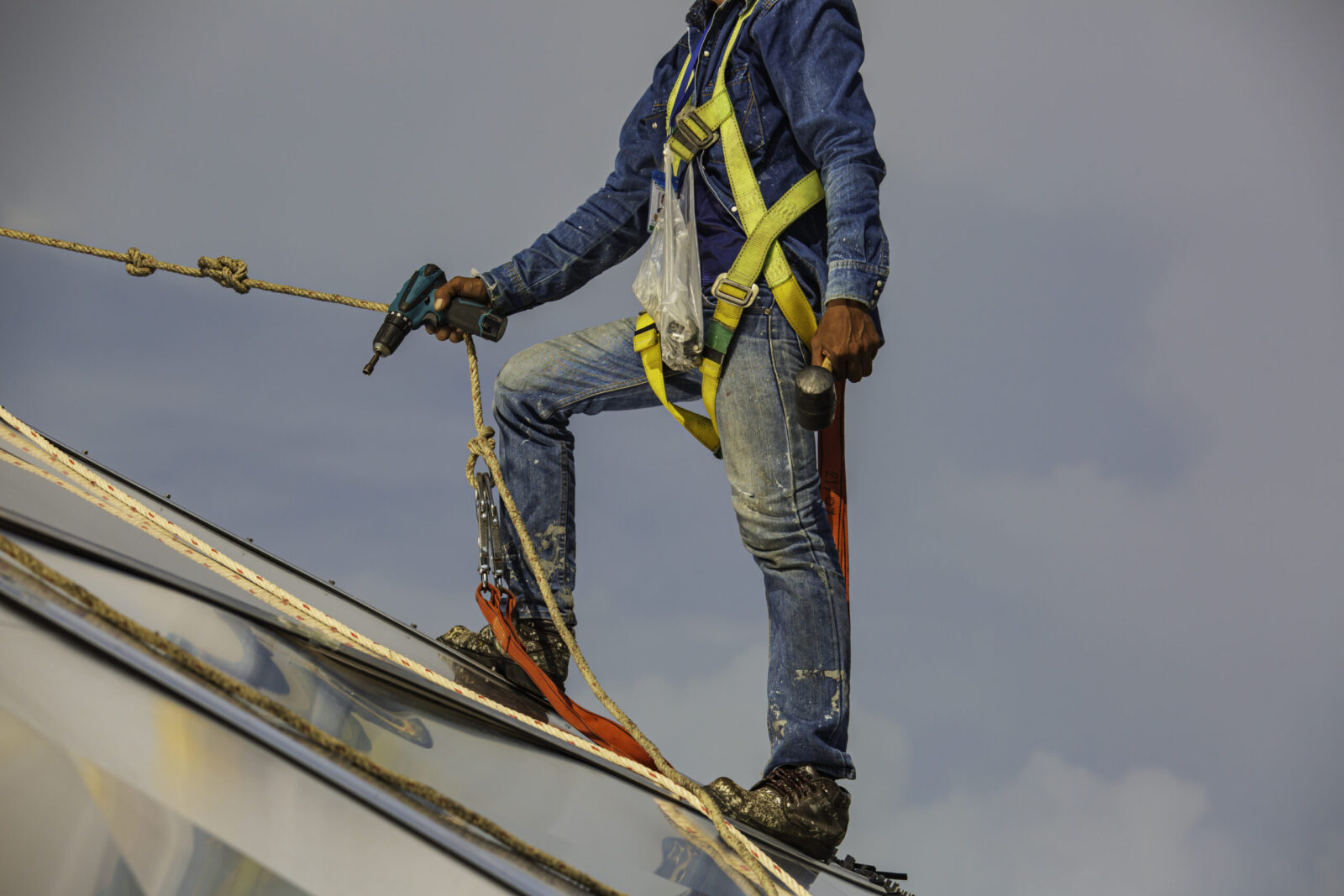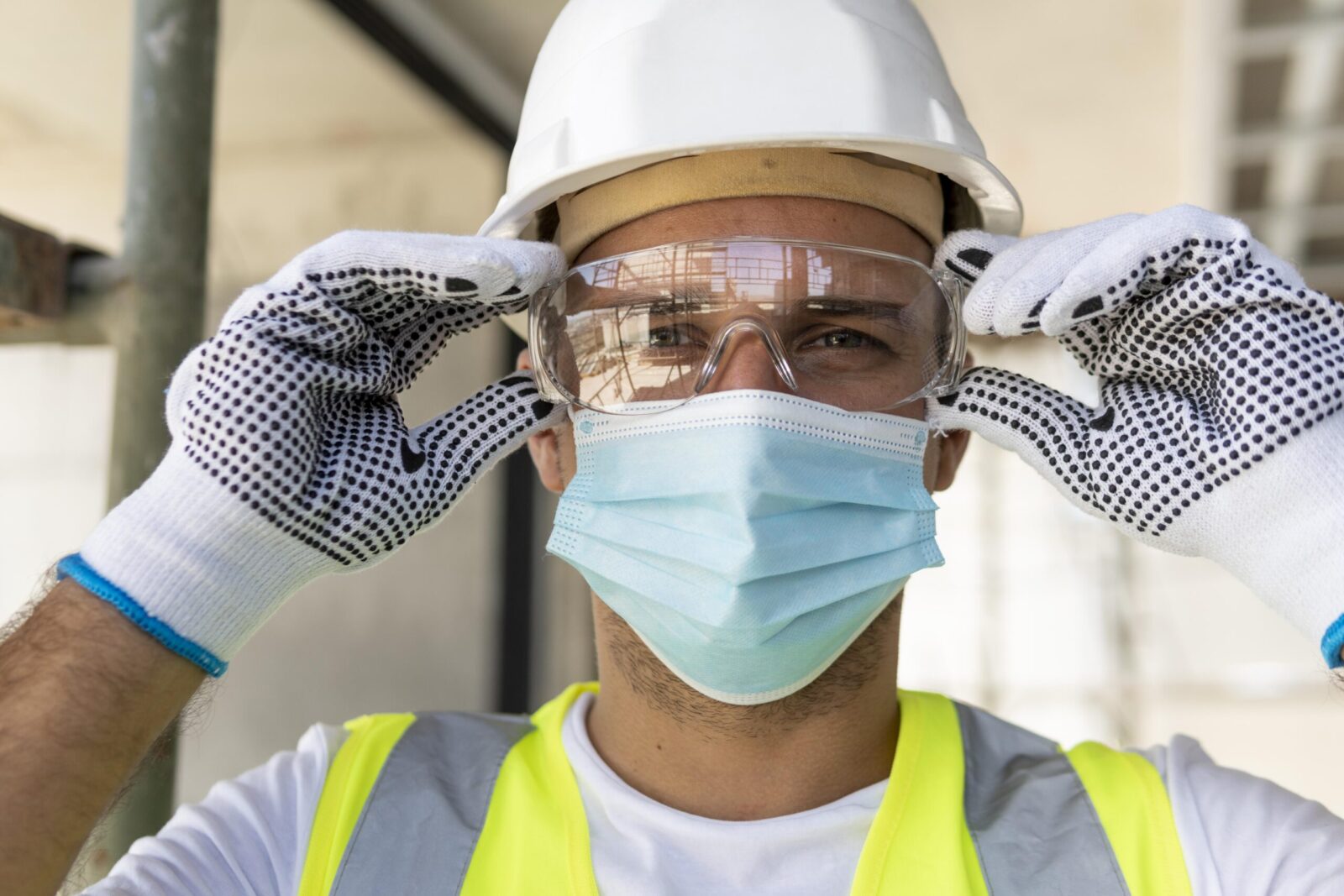
Essential PPE in the Food Industry: What You Need to Know
Overwhelmed by PPE options for food safety? Master your PPE selection for food workers safety with these practical tips.

Get 20€ off on your first order!
Fall safety equipment is a critical component of workplace safety across industries, particularly in construction, manufacturing, and maintenance sectors. Selecting the right equipment ensures compliance with European safety standards, minimizes risk, and protects workers from life-threatening injuries. This guide provides a clear, structured approach to choosing fall safety equipment, addressing the essential aspects of safety, functionality, and regulatory compliance.
Falls are a major reason why people get hurt or killed at work. In Europe, fall safety systems for workers at height are regulated by strict rules such as the European Directive 2001/45/EC and EN standards. Using the right fall protection gear can help keep workers safe, protect companies from lawsuits, and keep the workplace safer.
Key considerations include:
Fall safety equipment typically includes several components, each designed to fulfill a specific purpose. Here’s an overview:
| Equipment Type | Purpose | Examples |
| Harnesses | Distributes the force of a fall across the body and keeps the worker upright. | Full-body harnesses, sit harnesses. |
| Anchor Points | Provides a secure attachment point for fall arrest systems. | Fixed anchors, mobile anchors, temporary anchor systems. |
| Lanyards and Lifelines | Connect the harness to the anchor point and reduce fall impact. | Energy-absorbing lanyards, retractable lifelines, rope grabs. |
| Connectors | Securely attach lanyards and lifelines to harnesses and anchor points. | Carabiners, hooks. |
| Guardrails | Act as a physical barrier to prevent workers from reaching fall-risk areas. | Portable guardrails, fixed edge protection systems. |
| Fall Arrest Systems | Stops a worker in the event of a fall while minimizing impact forces. | Personal fall arrest systems, horizontal lifeline systems. |
| Rescue Equipment | Allows for the safe retrieval of a worker after a fall. | Rescue kits, winches, and pulley systems. |
The first step is identifying the specific needs of the workplace. This includes:
Example: Workers repairing industrial chimneys require full-body harnesses, mobile anchor systems, and fall arrest equipment tailored for vertical work.
Equipment is trusted and authorised by law when it meets European safety requirements. Important guidelines comprise:
Ensure all equipment is CE-certified, indicating conformity with European health, safety, and environmental protection standards.
Harnesses are a critical component of any fall safety system. Consider the following:
Fall safety systems find a strong link in anchor points. The type of the work will determine whether they are fixed, portable, or mobile.
These components connect the harness to the anchor and are essential for fall arrest. Consider:
Durability is critical for safety and cost-efficiency. High-quality materials such as polyester, nylon, and aluminum alloy provide strength and resistance to wear.
Install caution lines, toe boards and guardrails wherever you can help to lower dependency on personal fall arrest equipment.
Equipment should be inspected before each use and undergo thorough professional inspections annually, as per EN standards.
While sharing is possible, ensure the harness is adjustable and inspected for wear between uses.
Lifespans vary by manufacturer, but most harnesses and lanyards last 5–10 years if maintained properly.
Yes, rescue devices must meet EN 1496 standards and make it possible for a worker to be picked up quickly and safely.
Picking out fall protection gear is an important part of keeping workers safe and following European safety rules. By carefully evaluating what the workplace needs, following the rules, and picking high-quality, long-lasting tools, managers can make the place of work safer for everyone. Proper training, regular inspections, and ongoing maintenance all make fall safety devices work even better. Don’t forget that spending money on safety is also spending money on the health and efficiency of your workers.
Thank you! You've signed up for our newsletter.



















Overwhelmed by PPE options for food safety? Master your PPE selection for food workers safety with these practical tips.

Struggling to maintain clear vision in demanding environments? This guide is here to help. By the end, you’ll know exactly...

Electricians across Europe face unique challenges that require reliable safety glasses to ensure both protection and efficiency. Whether safeguarding against...

Overwhelmed by PPE options for food safety? Master your PPE selection for food workers safety with these practical tips.

Struggling to maintain clear vision in demanding environments? This guide is here to help. By the end, you’ll know exactly...

Electricians across Europe face unique challenges that require reliable safety glasses to ensure both protection and efficiency. Whether safeguarding against...
Get 20€ off on your first order!
Save 30% by buying directly from brands, and get an extra 10€ off orders over €100
Save 30% by buying directly form brands, and get an extra 10€ off orders over €100